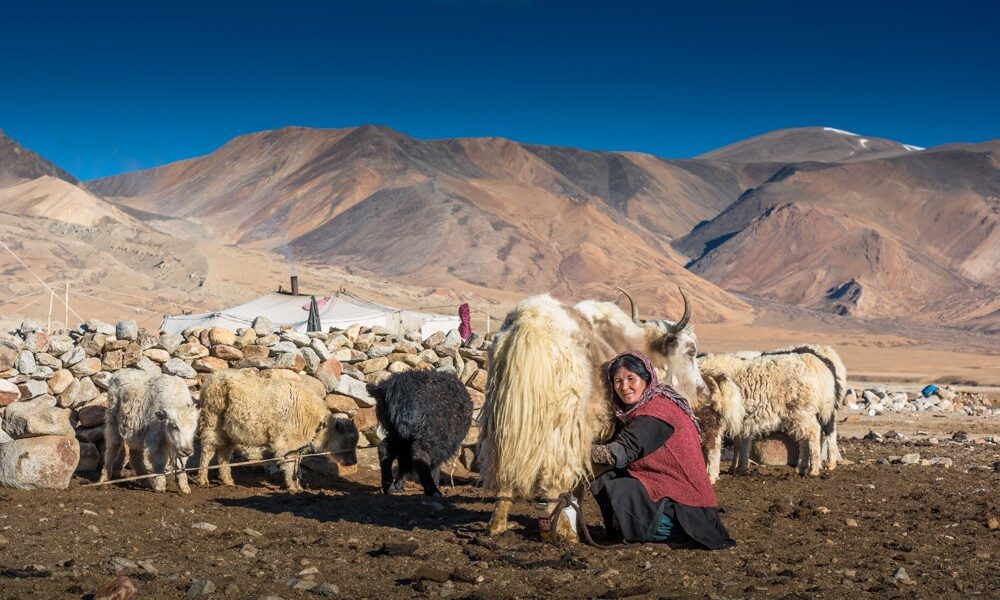Nestled in the stunning landscapes of the Himalayas, Ladakh’s micro-communities represent a world shaped by resilience, tradition, and adaptability. These nomadic tribes, living at altitudes that test the limits of human endurance, offer a rare insight into a way of life where nature, community, and heritage come together. In this post, we’ll explore the unique lifestyles of these nomads, their cultural practices, the challenges they face, and how they’re adapting to a rapidly changing world.
Historical Roots of Ladakh’s Nomadic Tribes
Evolution of Nomadic Life in Ladakh
Ladakh’s nomadic life dates back centuries, influenced by Tibetan culture and trade routes like the ancient Silk Route. Many of the tribes, such as the Changpa, have origins rooted in Tibet. Over generations, they adapted to Ladakh’s high-altitude desert climate and established a pastoral lifestyle focused on yak and goat herding.
“The history here is like a living museum! Walking through the camps of Ladakhi nomads, I felt connected to a world long past.” — Ana Garcia, Anthropologist, Spain
Influence of Tibetan and Buddhist Culture
Buddhism has had a profound impact on Ladakh’s micro-communities, weaving its spiritual practices into every aspect of daily life. Many festivals, rituals, and even social structures among Ladakhi nomads reflect Tibetan Buddhist beliefs, creating a unique spiritual and cultural identity that strengthens community bonds.
“Experiencing the spirituality of Ladakh’s tribes is life-changing. Their faith is intertwined with every ritual, every prayer flag swaying in the wind.” — Martin Feld, Travel Writer, Germany
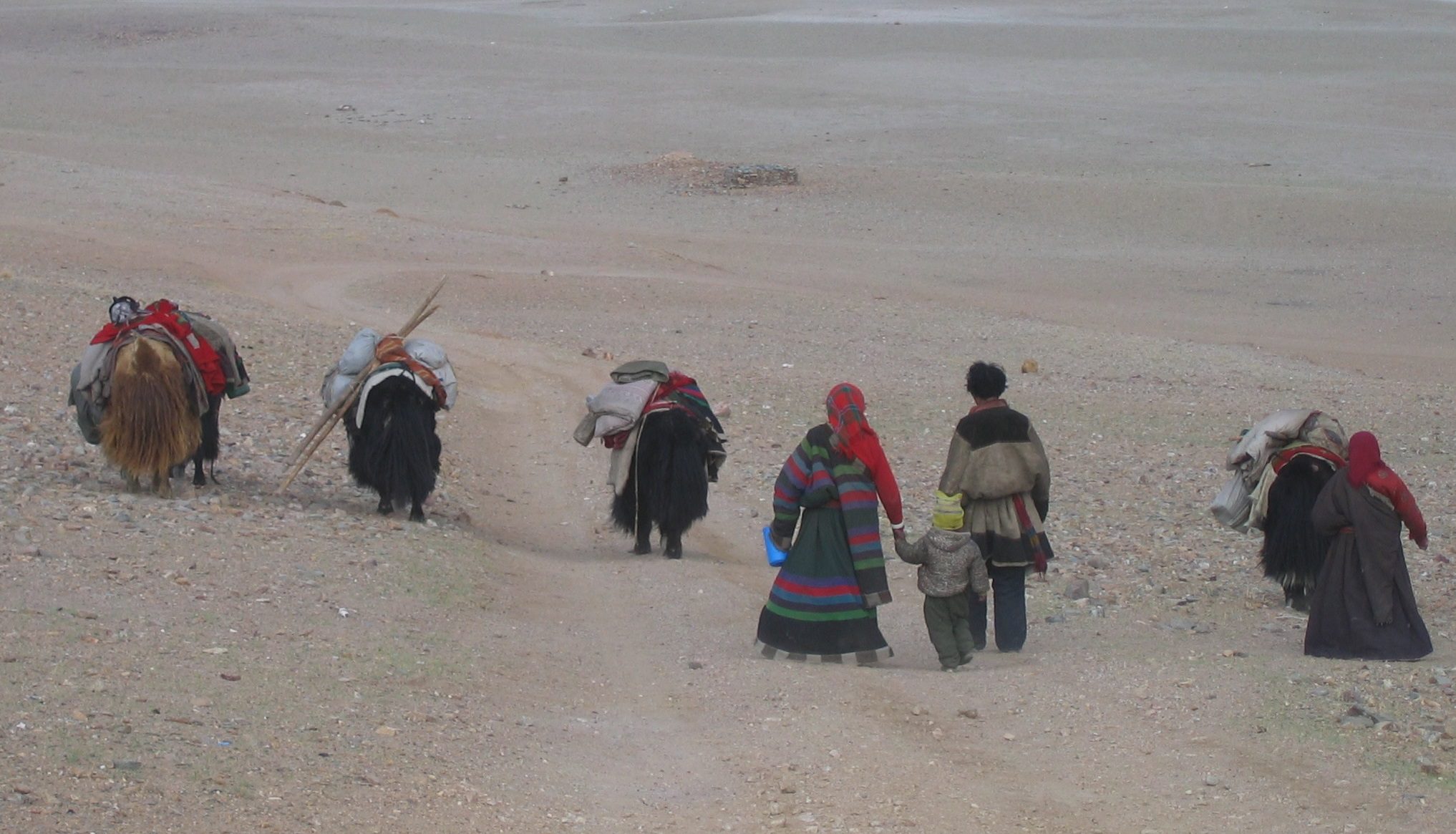
Geographic and Environmental Challenges of Ladakh
High-Altitude Survival and Adaptation in Ladakh
Surviving in Ladakh’s high-altitude terrain requires physical resilience and traditional knowledge passed down through generations. Ladakhi tribes practice rotational grazing and use natural resources wisely to protect the fragile environment. The temperature extremes—from freezing winters to scorching summers—demand unique survival skills honed by years of adaptation.
“As a mountaineer, I was stunned by how Ladakh’s nomads adapt to the elements. Their high-altitude resilience is nothing short of remarkable.” — Sophie Anderson, Mountaineer, United Kingdom
Environmental Pressures and Climate Change
Ladakh’s fragile ecosystem faces increasing pressure from climate change. Rising temperatures and unpredictable weather patterns threaten the water supply and grazing lands critical to nomadic life. These environmental shifts have led to changes in migration patterns and resource use, forcing the tribes to adapt to new environmental realities while striving to preserve their traditional lifestyle.
“The impact of climate change on Ladakh’s landscape is visible, yet these tribes adapt with such dignity and resilience.” — Omar Khan, Environmental Scientist, Canada
The Changpa Tribe: Custodians of Ladakh’s Pastoral Heritage
Unique Lifestyle of the Changpa Tribe
The Changpa tribe, one of Ladakh’s most renowned nomadic groups, is central to the region’s pastoral culture. Known for herding Pashmina goats, which produce the world-famous Pashmina wool, the Changpa are skilled in high-altitude herding and crafting fine wool products that are a lifeline for their economy. They migrate seasonally across Changthang’s arid lands in search of grazing pastures for their herds.
“Meeting the Changpa was like stepping into a different era. Their knowledge of herding and nomadic life is unparalleled.” — Laura Rizzo, Textile Artisan, Italy
Importance of Pashmina Wool in Changpa Economy
Pashmina wool, sourced from the Changpa tribe’s goats, is a highly valued commodity. It not only supports the Changpa economically but also links them to global markets. Pashmina shawls are crafted with traditional techniques, providing income for the tribe while keeping their customs alive. This economic model exemplifies sustainable resource use and highlights the global demand for Ladakh’s unique artisanal products.
“The quality of Ladakhi Pashmina is unmatched. Seeing the care with which the Changpa handle their herds adds so much meaning to this luxurious fabric.” — Jenna Lee, Fashion Designer, USA
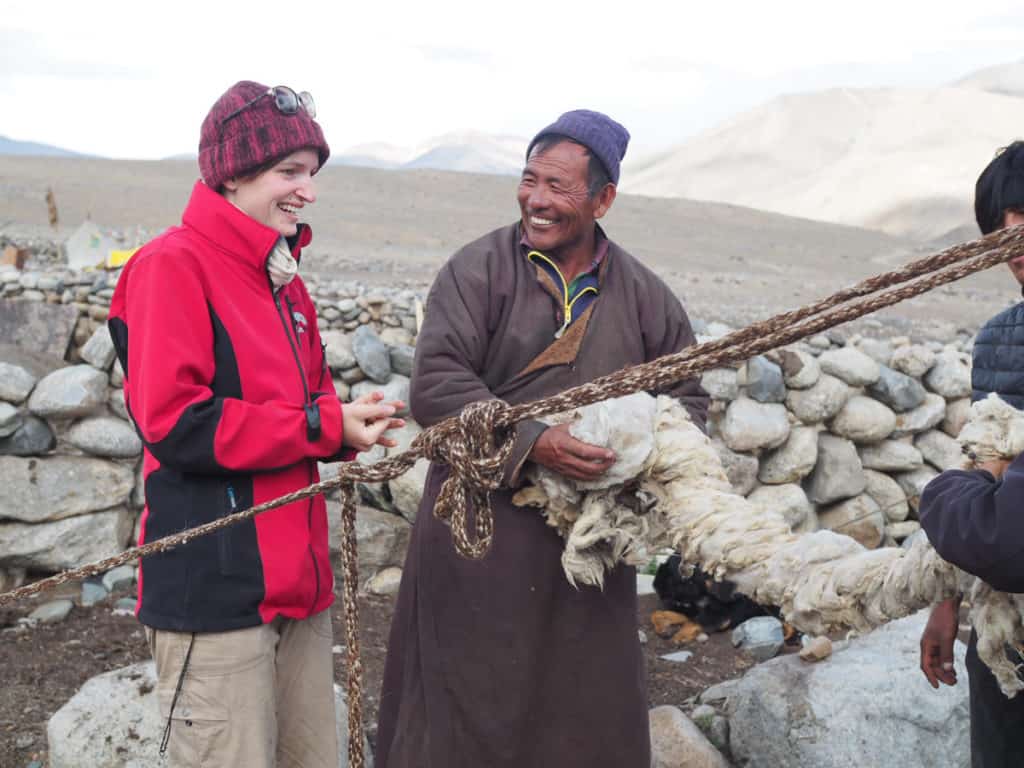
Daily Life and Social Structure of Ladakh’s Nomadic Tribes
Community and Family Life in Nomadic Tribes
Ladakhi nomads live in tightly knit communities where every individual has a role to play. Family structures are often multigenerational, with children, parents, and grandparents working together to tend livestock, build tents, and gather resources. This communal lifestyle fosters a deep sense of belonging and purpose, with shared responsibilities binding the community together.
“The sense of community among Ladakh’s tribes is inspiring. Each member contributes to the whole in such a meaningful way.” — Ethan Brown, Sociologist, Australia
Role of Festivals and Religious Ceremonies
Religious ceremonies and festivals play a vital role in Ladakhi culture, serving as moments of communal gathering and celebration. Festivals, such as Losar (the Tibetan New Year), involve rituals, prayers, and vibrant decorations that reflect the region’s Buddhist heritage. These ceremonies not only strengthen social bonds but also connect the tribes to their ancestors, creating a living link to their cultural past.
“I witnessed a Losar festival while visiting Ladakh. The colors, chants, and unity during the celebration were mesmerizing.” — Dinesh Patel, Photographer, India
Sustainable Practices and Resource Management Among Nomads
Indigenous Environmental Practices
The nomadic tribes of Ladakh have perfected sustainable practices to coexist with their environment. These include rotational grazing to prevent overuse of land and practices that ensure minimal impact on local flora and fauna. The Ladakhi nomads’ eco-conscious approach to resource use serves as a model for sustainable living in a high-altitude desert.
“The tribes’ harmony with nature is something urban societies could learn from. They respect the land deeply.” — Alice Thompson, Ecologist, New Zealand
Traditional Knowledge and Climate Adaptation
Ladakh’s nomads use traditional knowledge to cope with environmental changes. Techniques such as knowing the migratory patterns of herds, reading seasonal cues, and efficiently using water sources are all vital for their survival. This adaptive knowledge allows them to endure unpredictable conditions, conserving resources for future generations.
“The indigenous knowledge Ladakhi tribes have is invaluable. Their adaptability is a testament to the strength of their culture.” — Mohammed Ali, Humanitarian Worker, United Arab Emirates
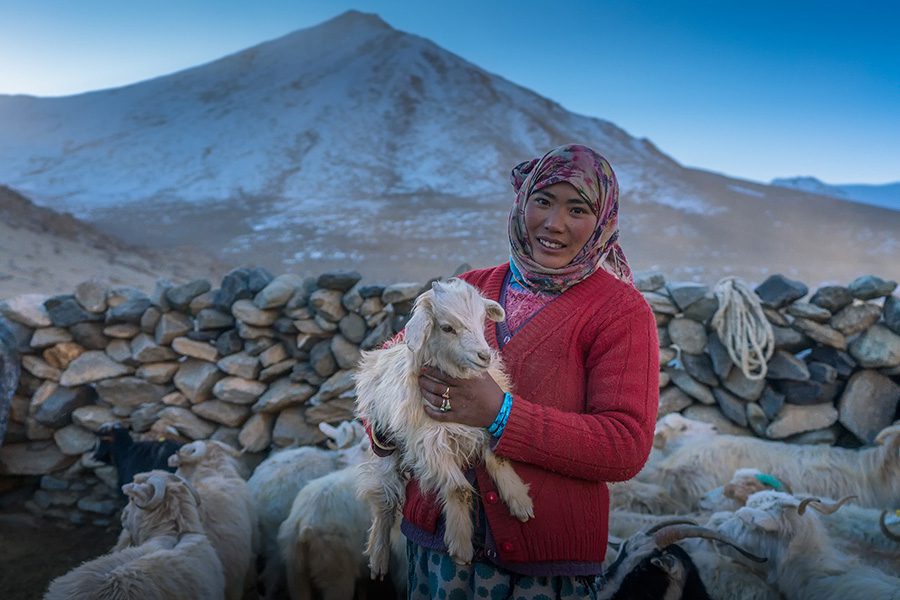
The Impact of Modernization on Ladakh’s Nomadic Tribes
Changes in Nomadic Lifestyle Due to Modern Influences
As modern amenities become accessible in Ladakh, nomadic lifestyles are evolving. The younger generation often faces a choice between continuing traditional practices or pursuing new educational and career opportunities. This transition can lead to shifts in traditional practices and migration patterns, challenging the survival of Ladakh’s cultural heritage.
“Modernization brings both opportunities and challenges. It’s fascinating to see how the younger generation bridges both worlds.” — Luis Gonzales, Education Consultant, Mexico
Challenges in Preserving Nomadic Heritage
Despite efforts to preserve their culture, Ladakhi tribes are at risk of losing their traditional knowledge and practices. Factors such as globalization, increased tourism, and the allure of modern lifestyles pose challenges to cultural preservation. Various conservation initiatives aim to safeguard the heritage of Ladakh’s micro-communities and ensure that their unique identity endures.
“The passion for preservation is strong among Ladakhi tribes, and it’s moving to witness their fight to keep their heritage alive.” — Emma Brooks, Cultural Anthropologist, United Kingdom
Tourism and Its Effects on Ladakh’s Nomadic Communities
Rise of Eco-Tourism in Ladakh’s Nomadic Regions
Eco-tourism has grown in popularity in Ladakh, offering travelers a glimpse into the lives of nomadic tribes while promoting sustainable travel practices. This form of tourism allows the tribes to share their traditions with a global audience, contributing to their economy without compromising their way of life.
“Eco-tourism in Ladakh is a revelation. It offers an authentic experience, helping preserve traditions without disturbing them.” — Tom Nakamura, Tour Guide, Japan
Responsible Tourism Practices to Protect Nomadic Culture
Responsible tourism emphasizes respectful interaction with Ladakhi tribes, ensuring that visitors understand and appreciate the customs of the local communities. Initiatives focused on responsible tourism help protect these micro-communities from the potentially adverse effects of mass tourism while supporting cultural preservation efforts.
“Traveling responsibly in Ladakh gave me a deeper appreciation for its people and their lifestyle. Every traveler should make the effort.” — Sarah Cooper, Travel Blogger, South Africa
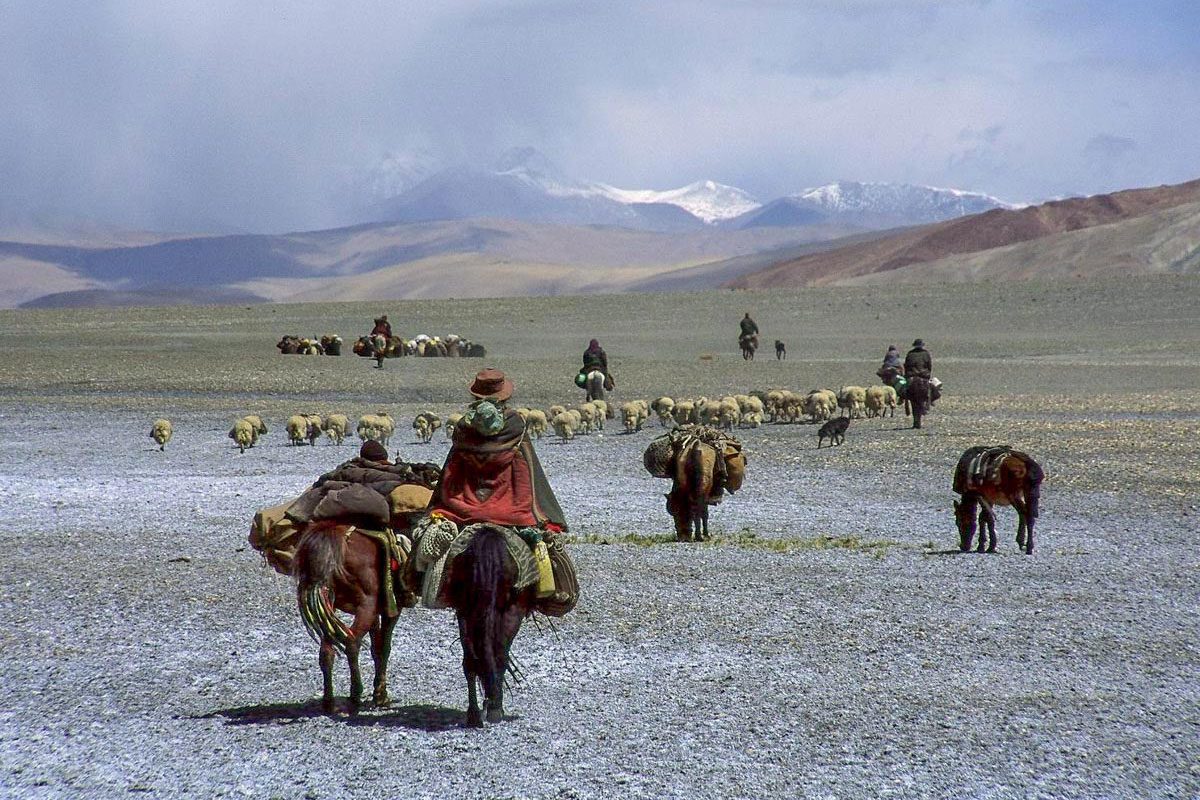
Future of Ladakh’s Nomadic Tribes and Cultural Preservation
Conservation Efforts for Ladakh’s Pastoral Communities
Various NGOs and local initiatives are working to support the nomadic tribes of Ladakh through conservation projects and sustainable livelihood programs. By promoting the use of traditional practices and providing educational opportunities, these efforts aim to keep Ladakhi culture alive while helping the tribes adapt to changing environmental and social dynamics.
“The conservation efforts in Ladakh are crucial. Supporting these communities preserves a valuable part of human heritage.” — Janet Morales, NGO Worker, United States
Role of Youth and Education in Shaping Nomadic Future
Education is playing a transformative role for Ladakhi youth. While it offers new avenues for employment, it also brings responsibility—the challenge of preserving traditional practices while exploring modern opportunities. The future of Ladakh’s nomadic communities will be shaped by this new generation’s ability to balance heritage with change.
“The young people I met in Ladakh embody resilience and hope. They honor their roots while embracing the future.” — Lucas Brown, Educator, Australia
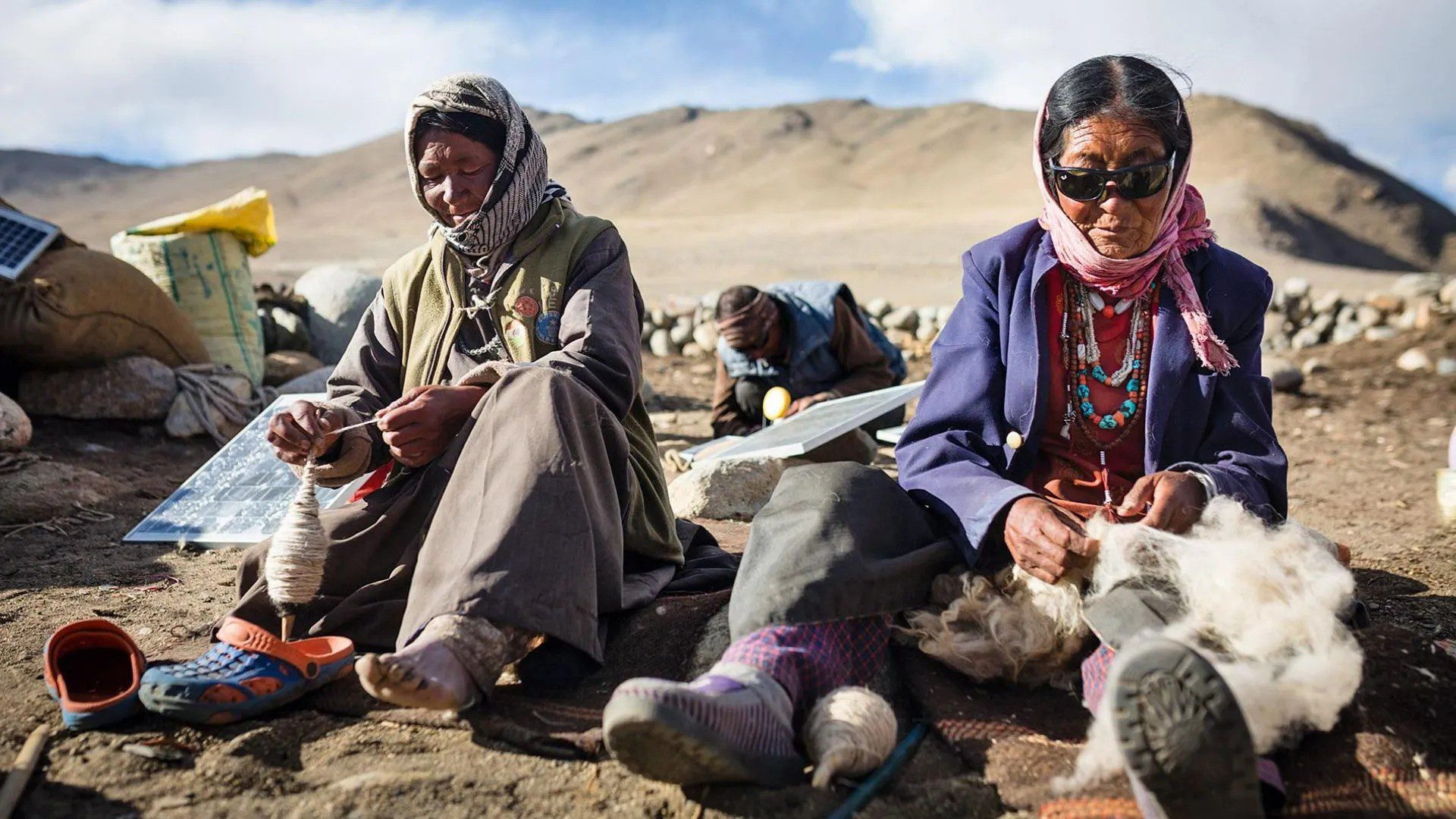
Q&A: Understanding Ladakh’s Micro-Communities and Nomadic Tribes
Q: What are the main nomadic tribes of Ladakh?
A: The Changpa and Brokpa are among the most prominent nomadic tribes in Ladakh, each with unique traditions and livelihoods.
Q: How do Ladakhi nomads sustain themselves?
A: Ladakhi nomads sustain themselves through herding, particularly yak and goat herding, as well as Pashmina wool production.
Q: What role does Buddhism play in Ladakhi nomadic culture?
A: Buddhism deeply influences Ladakhi culture, with rituals, ceremonies, and values reflecting Buddhist beliefs and traditions.
Q: How does climate change affect Ladakh’s nomadic tribes?
A: Climate change impacts grazing lands, water resources, and seasonal migration patterns, leading tribes to adapt their traditional practices.
Q: What is eco-tourism, and how does it impact Ladakhi tribes?
A: Eco-tourism allows visitors to experience nomadic life sustainably, providing income for tribes while promoting cultural preservation.
Q: What steps are being taken to preserve Ladakh’s nomadic culture?
A: Conservation efforts, responsible tourism, and educational initiatives help protect and sustain Ladakh’s nomadic traditions.

